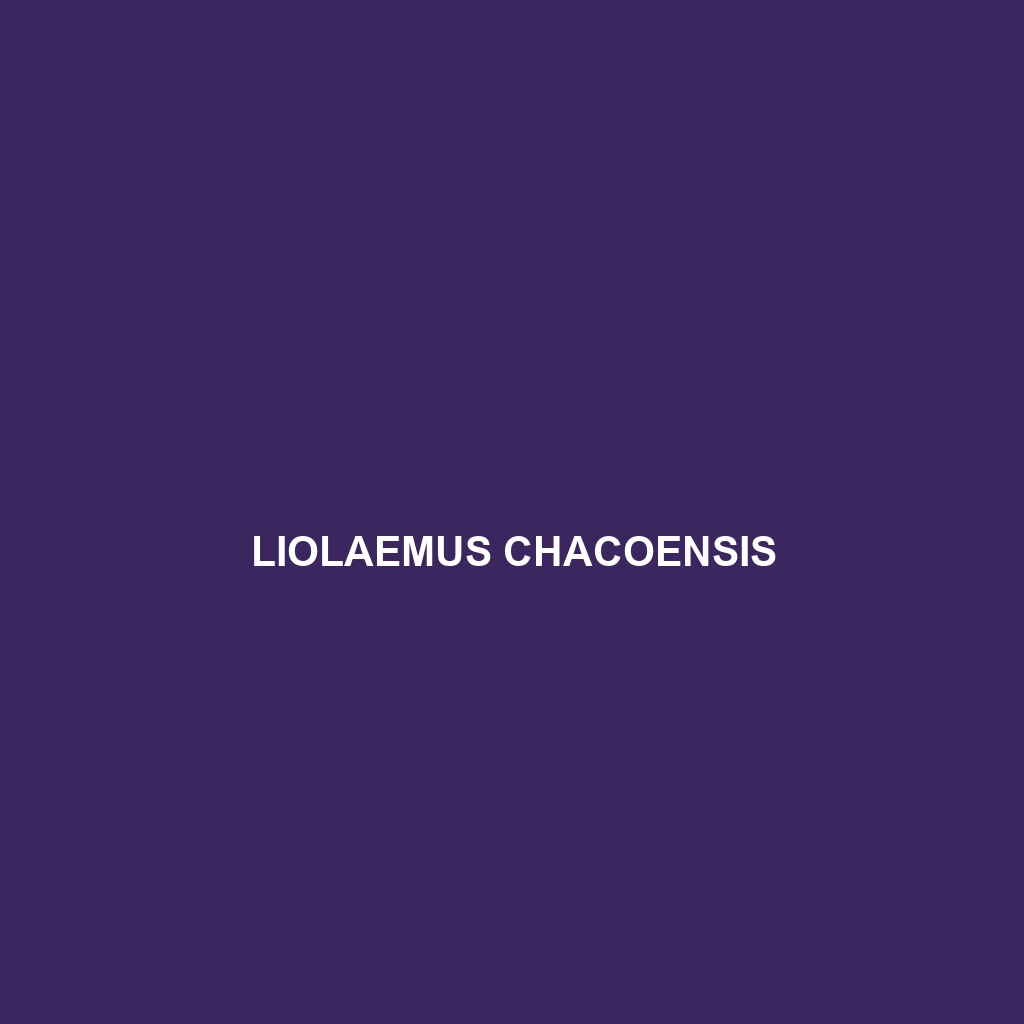Common Name
Liolaemus chacoensis
Scientific Name
Liolaemus chacoensis
Habitat
Liolaemus chacoensis primarily resides in the Chaco region of Argentina, which features a diverse array of habitats, including semiarid landscapes, dry forests, and grasslands. This lizard is well-adapted to its environment, thriving in the region’s warm climate that is characterized by seasonal rainfall and dry spells. The Chaco region includes several different ecosystems, such as savannas and temperate forests, along with shrub lands that offer a variety of microhabitats for the species to explore. Such environmental conditions allow Liolaemus chacoensis to flourish, feeding on available flora and fauna while seeking shelter among rocks and vegetation.
Physical Characteristics
Liolaemus chacoensis exhibits a distinctive set of physical traits that contribute to its identification. Adult individuals typically range in size from 15 to 30 centimeters in total length. The lizard showcases a robust body, with a relatively long tail that accounts for much of its overall length. A notable characteristic of this species is its coloration; it possesses a mix of earthy tones, ranging from sandy beige to light brown, which aids in camouflage among its natural surroundings. The presence of dark spots or markings along its back is common, providing additional camouflage against the Chaco region’s background. Its limbs are well-developed, allowing it to climb and navigate through thick underbrush effectively.
Behavior
The behavior of Liolaemus chacoensis is characterized by a mix of diurnal activity, with peak times being in the early morning and late afternoon when temperatures are moderate. These lizards are known for their territorial behavior, particularly males, who often display aggression towards other males during mating season or when defending their territory. Liolaemus chacoensis has unique mating rituals that involve elaborate displays and movements. These can include head bobs and body twitches, which serve to attract potential mates. Social interactions can also be observed during basking periods, as these lizards may congregate in small groups to warm themselves under the sun.
Diet
Liolaemus chacoensis is primarily insectivorous, feeding on a diet rich in insects such as beetles, ants, and other small invertebrates. This lizard will often hunt actively, utilizing both sight and movement to catch its prey. While it primarily consumes insects, there is some evidence to suggest that Liolaemus chacoensis may occasionally ingest plant material, classifying it as a generalist that exhibits opportunistic feeding habits. Understanding the diet of this lizard is crucial, as it plays a significant role in controlling insect populations within its habitat.
Reproduction
The reproductive cycle of Liolaemus chacoensis typically occurs during the warmer months, aligning with the wet season in the Chaco region. Mating usually takes place after a series of courtship displays, with males competing for female attention. Following successful mating, females undergo a gestation period lasting approximately 2 to 3 months. Liolaemus chacoensis is ovoviviparous, meaning that the female gives birth to live young rather than laying eggs. Offspring are approximately 5 to 7 centimeters long at birth and are largely independent, quickly acclimating to their environment. Parental care is minimal, with mothers offering no post-hatch assistance.
Conservation Status
Currently, Liolaemus chacoensis is classified as least concern by the International Union for Conservation of Nature (IUCN), indicating that the species is not facing immediate threats to its survival. However, habitat loss due to agricultural expansion and urbanization poses potential challenges for the future. Conservation efforts focus on habitat preservation and promoting awareness among local communities about the ecological importance of this species. Continued monitoring of its population is essential to ensure Liolaemus chacoensis remains stable in the face of environmental changes.
Interesting Facts
Liolaemus chacoensis exhibits some extraordinary adaptations that contribute to its survival. One fascinating fact is its ability to alter its coloration slightly in response to different environmental factors, enhancing its camouflage. Additionally, these lizards are known to bask in the sun with their bodies positioned at various angles to regulate their body temperature efficiently, a behavior critical in maintaining their metabolic functions. Another intriguing aspect of their biology is their formidable climbing ability, which allows them to access food sources and evade predators effectively.
Role in Ecosystem
Liolaemus chacoensis occupies an important ecological niche within the Chaco ecosystem. As an insectivore, it significantly contributes to controlling insect populations, promoting balance within its habitat. These lizards sometimes serve as prey for larger predators, such as birds of prey and snakes, thereby playing a role in the food web. Additionally, their activities, such as burrowing and foraging, help aerate the soil and promote seed dispersal, reinforcing the health of the ecosystem. Their presence is vital for maintaining the delicate balance of the species interactions that underpin the Chaco region’s biodiversity.
